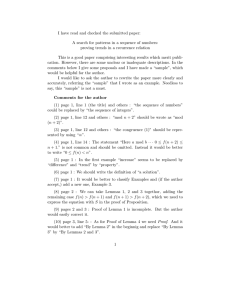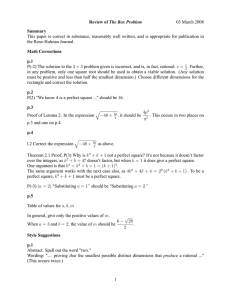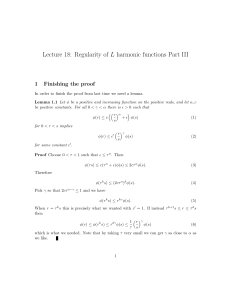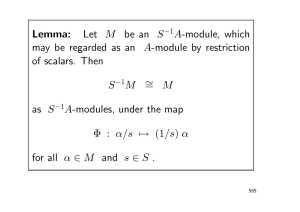Theorem 1.1 (Claim) The sum of all natural numbers is
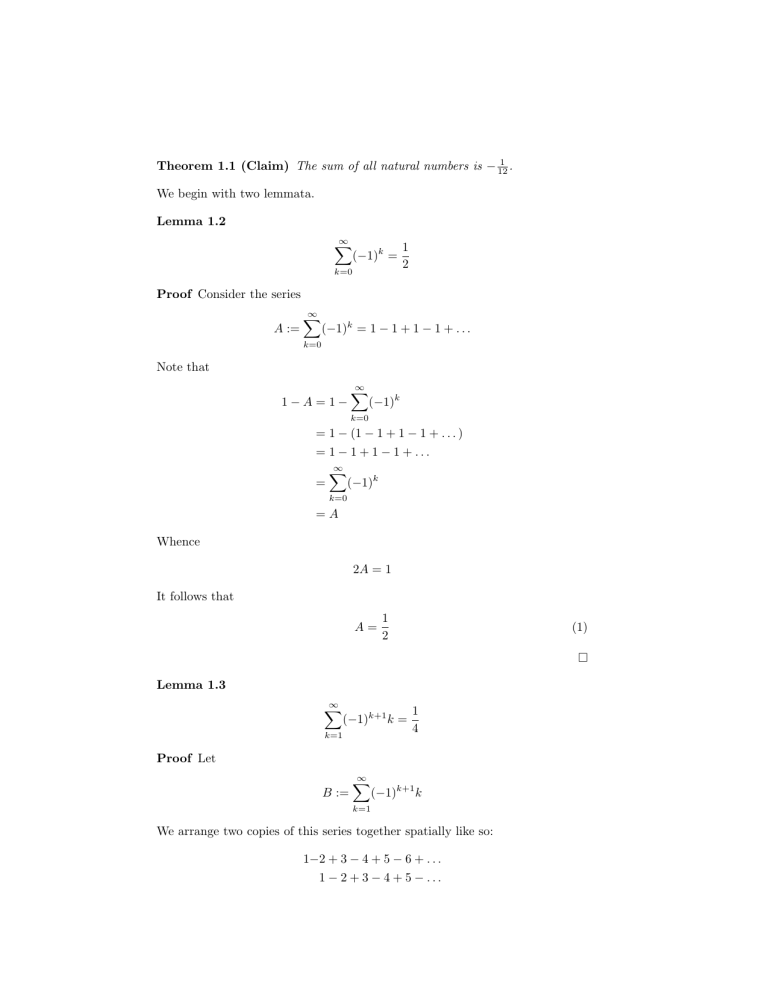
Theorem 1.1 (Claim) The sum of all natural numbers is − 1
12
.
We begin with two lemmata.
Lemma 1.2
Proof Consider the series
A :=
∞
X
( − 1) k
= 1 − 1 + 1 − 1 + . . .
k =0
Note that
∞
X
( − 1) k
=
1
2 k =0
1 − A = 1 −
∞
X
( − 1) k k =0
= 1 − (1 − 1 + 1 − 1 + . . .
)
= 1 − 1 + 1 − 1 + . . .
=
∞
X
( − 1) k k =0
= A
Whence
2 A = 1
It follows that
A =
1
2
Lemma 1.3
∞
X
( − 1) k +1 k =
1
4 k =1
Proof Let
B :=
∞
X
( − 1) k +1 k k =1
We arrange two copies of this series together spatially like so:
1 − 2 + 3 − 4 + 5 − 6 + . . .
1 − 2 + 3 − 4 + 5 − . . .
(1)
And adding term-by-term column-wise, we get
1 + ( − 2 + 1) + (3 − 2) + ( − 4 + 3) + . . .
= 1 − 1 + 1 − 1 + . . .
= A
From equation (1), we have
2 B = A and therefore
2 B =
1
2
It follows that
B =
1
4
(2)
Finally, we are ready for the main result.
Proof of 1.1
Let
S :=
∞
X k k =1
Note that
S − B =
∞
X k −
∞
X
( − 1) k +1 k k =1 k =1
= (1 + 2 + 3 + 4 + 5 + 6 + . . .
) − (1 − 2 + 3 − 4 + 5 − 6 + . . .
)
= 0 + 4 + 0 + 8 + 0 + 12 + . . .
= 4 (1 + 2 + 3 + . . .
)
= 4 S
It follows that
3 S = − B
And from equation (2) we have
3 S = −
1
4
Thus,
1
S = −
12






